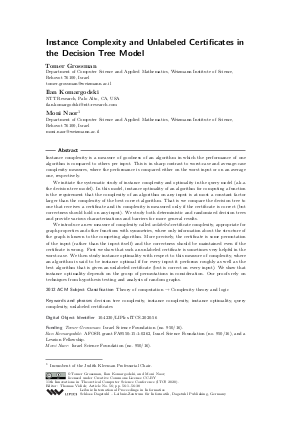LIPIcs.ITCS.2020.56.pdf
- Filesize: 0.79 MB
- 38 pages

 Creative Commons Attribution 3.0 Unported license
Creative Commons Attribution 3.0 Unported license







































Feedback for Dagstuhl Publishing